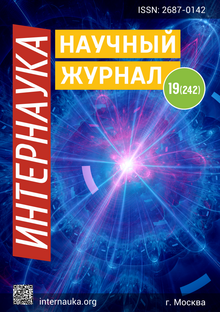METHODS FOR REDUCING THE SEISMIC VULNERABILITY OF RESIDENTIAL BUILDINGS

METHODS FOR REDUCING THE SEISMIC VULNERABILITY OF RESIDENTIAL BUILDINGS
Assel Kissabayeva
Assistant, master of technical science Satbayev University,
Kazakhstan, Almaty
ABSTRACT
The article describes a new method of seismic vulnerability of residential buildings, as well as a comparative historical analysis.
Keywords: analysis, seismic, modern construction, buildings, structures.
The region of the south and southeast of the Republic of Kazakhstan occupies the territory of seismically active belts of Eurasia and is caused by frequent geodynamic actions, this is expressed by earthquakes. Over the past 140 years, a number of disastrous seismic events have taken place in this area, about two of them were with a magnitude of more than 8. The degree of seismic activity remains high in our time. The proof of these data is seismic activity with М>6.0 (Zhalanash-Tyupskoye М=6.8; Zaisanskoye М=6.8; Baysorunskoye М=6.3), which took place in this area over the past decades. Due to the distinctive properties of the natural environment of this area, all the most industrially progressive and densely populated areas of the south and southeast of the Republic of Kazakhstan are located near the likely risky areas with a magnitude of 6.0–8.0. Unfortunately, we cannot reduce seismic activity, but we can do a lot to reduce the likelihood of earthquakes, thus reducing the damage.

Picture 1. Consequences of earthquakes near the city of Almaty
The most common method for determining the endurance of a structure is the vibrodynamic method. Unfortunately, this method does not provide such opportunities as ultrasonic, which does not harm the durability of concrete, that is, this method does not allow the study of building structures without harmful consequences. In order to diagnose the dynamic characteristics of a structure, it is advisable to understand its impact on the vibrodynamic study of building structures. The transmission sample, the extinction of mechanical vibrations, the amplitude mode of this structure in resonance are tested. In order to test the device used (vibration sensors), the results are compared with the results of the reference sensor.
The study of structures under the influence of vibrodynamic influence provides the formation of possible risks and appropriate measures to protect against harmful
phenomena. By means of a special device, professionals fix the level of vibrations of structures and provide advice on the subsequent application of the structure.

Picture 2. Hotel "Kazakhstan" was subjected to vibrodynamic tests
The "invisible buildings" method was created to reduce the seismic vulnerability of residential buildings, that is, to make the structure invisible to earthquake waves. This method was developed by a community of British-French scientists. Scientists were inspired by the "stealth technique" aviation technique, it helps aircraft to be unnoticed, that is, invisible to radar. However, the current method refers to the "invisibility" of structures for seismic vibrations. It is important to note that this technique is confirmed by the combination of the use of a certain material and a non-standard plane shape. Together, these features make aircraft undetected by radar, deflecting to some extent and absorbing to some extent. In the embodiment of the "invisible" structure, the motive was the same. Experts calculated the parameters of the "breakwater", which is made of plastic, copper and other materials. "Breakwaters", according to the plan of specialists, will absorb and partially dissipate the destructive energy of seismic waves. A series of studies on protected structures set off seismic vibrations that were similar to an earthquake with seismic activity. A system resembling the shape of rings absorbed or dissipated vibrations, keeping them out as much as possible inside the rings.
Stealth (translated from English into Russian "invisible") - association
methods of reducing the visibility of military movement devices in infrared
and radar, as well as in other similar areas of the visibility spectrum
with the help of specially designed geometric shapes and the use of radar-absorbing coatings, which apparently reduces the survival rate of combat appliances.
Visibility reduction technology is an independent branch of the military science discipline of electronic countermeasure systems, surround coverage techniques for preparing military vehicles (ships, aircraft, missiles, helicopters and
etc.). It should be noted that a large coverage of radio waves can be obtained
only centimeter coverage, and even worse in decimeter. In view of the physical sciences of the popularization of radio waves, make an object invisible in meter coverage by comparing the wavelength with its own dimensions object, the shape of the object cannot be changed. It is worth noting that now technology is so advanced that it can absorb any kind of radio emission is practically impossible.

Picture 2. An example of stealth technology in aviation
References:
- P RK 2.03-30-2017 "Construction in seismic regions (zones) of the Republic of Kazakhstan".
- Bulletin of JSC "KazNIISA" "Research of seismic resistance of structures and structures".
- The results of the report on testing the structure for seismic resistance by the experimental method of KazNIISA JSC in 2017; 26–29.
- Zhunusov, T. Zh. Seismic construction of buildings. Alma-Ata, 2002
- The results of the report on testing the structures of hinged facade systems for seismic resistance by the experimental method of KazNIISA JSC in 2018
- Zhunusov, T. Zh. Study of seismic stability of structures and structures. RSE "KazNIISA" Alma-Ata, 2002
- ST RK 1875–2009 “Anchor fasteners for facade systems. Specifications". 5. Bulletin of JSC "KazNIISA" "Research of seismic resistance of structures and structures".
